mmcartalk
Expert
- Messages
- 4,164
- Reactions
- 2,677
MM Retro-Write-Up: 1992-2000 Mitsubishi Diamante
IN A NUTSHELL: A nice, cruising-type of sedan/wagon that was simply overlooked and got crushed by the flood of Toyota, Honda, and Nissan competitors.
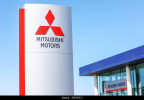
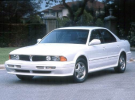
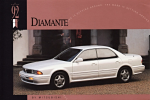

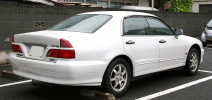
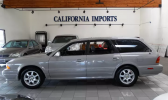
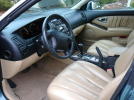
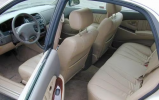
Some of you, here on the forum, may not be aware of or remember the Mitsubishi Diamante, as it was never a very popular sedan in the U.S., having had, at the time, strong competition from a number other mid-to-large-size Front-Wheel-Drive sedans from American, European, and Japanese manufacturers. Mitsubishi, at the time (early 1990s), produced a number of vehicles for other manufacturers who rebadged them, but, having entered the American market under their own name in the early 1980s, was still having problems getting established under their own nameplate. The Eclipse and Evo had a hard-core, cult-like following among young adult males, but the rest of the lineup simply did not have much appeal to the American public as a whole. The mid-to-large-size Diamante sedan, perhaps more than any other Mitsubishi model at the time, languished in showrooms and simply did not sell, as most buyers of this type of upmarket/semi-luxury sedan were taking home Lexus ES300s, Infiniti I30s, Buick LeSabres, Nissan Maximas, Toyota Avalons, Mercedes E-Class, BMW 5-series, and Audi A6s.
And it did not help, of course, that Mitsubishi did not have a very large number of dealerships across the U.S…..back then, of course, there was no such thing as buying a new vehicle on-line or having it delivered to your home. The company did, though, have a lot more American dealerships then than it does now. In my area, for example (Northern Virginia/D.C. suburbs), there were once three or four Mitsubishi dealerships within reasonable driving distance…gradually, it filtered down to zero, although a couple of years ago, a new Mitsubishi franchise DID open up in Manassas, VA, not far from my house (I did an MM dealer-review of that shop). So, now, there is a grand total of one..….although it shares a large, old, plain, and unimpressive building/facilities with a used-car-buisness. Isuzu and Suzuki did the same thing….they allowed their automotive dealerships to gradually shrink down to almost nothing, and were forced out of the American market. Mitsubishi, however, has hung on by a thread, and is still marketing products in the U.S. with its small number of dealerships, although vehicles like the Diamante are long-gone…..there are only small SUVs/crossovers and the ultra-cheap Mirage subcompact hatchback/sedan.
Anyhow, so much for today’s Mitsubishi…back to the Diamante of 30 years ago. I only got one chance to ever drive one…at a dealership in Suburban Maryland, on Rockville Pike, when I was at the dealership checking out a new Eclipse for a co-worker of mine who was interested in one. The dealership had a couple of Diamantes in stock, and, just out of curiosity, I wanted to see what Mitsu’s flagship sedan was like….so the reps went and got me a key and dealer-tag.
The Diamante was derived in more or less the same manner that Toyota did the Avalon…stretching the mid-sized FWD Camry platform into a semi-full-size sedan. Mitsubishi took its mid-sized FWD Galant sedan platform (which, at the time, sold in far fewer numbers than the extremely popular Camry), and stretched it into the new Diamante, introduced into the American market in 1991 for the 1992 model-year. The name Diamante itself, of course, was taken from the Spanish word for “Diamond”……Mitsubishi’s corporate logo is three red diamonds (see the image I posted above). While overseas versions got in-line fours and 5-speed manual transmission options (and were sold under different names), American versions got 3.0L V6 of 175-202 HP (depending on trim level) and a 4-speed automatic.
The first thing I noticed about the Diamante, before I even sat in it, was how much it looked like a typical BMW of the time, particularly with the split-grille front end. I don’t know if that was merely a co-incidence, or if it was a deliberate attempt on the part of the designers to emulate BMWs, the “Ultimate Driving Machines” which, at the time, were becoming increasingly popular in the U.S., particularly with what were called “Yuppies”……the young, urban, professional work force in the computer and high-tech-industries. It even felt somewhat like a Bimmer inside, with closely-form-fitted front seats, a legible dash/instrument panel, and solid, Thunk-closing doors of substantial sheet metal.
But, on the road, it did not feel or drive like a BMW of the time. In fact, as I recall, it felt more like a shrunken and less-massive version of the old Lincoln Continentals of the 1960/70s. It seemed designed for stability, cruising, a heavy solid feel, and a cocoon-like feeling of safety and protection inside. Not that the steering was sluggish or unresponsive by any means….the car basically went where you pointed it, but, despite the BMW-like interior and seats, it just did not give one the feeling of a sports-sedan. Which was fine with me, because, in general, I like a non-sporting feel and a reasonably smooth ride. BMW’s, for years, up until fairly recently, excelled in a near-perfect combination of steering-feel, comfort, and handling-precision…they had, at the time, what were arguably the best chassis-engineers in the world, although today Mercedes (also arguably) has that title. The Diamante, however, gave one a feeling of quietness, solidness and mechanical quality, although as I recall, it was not quite the low road/wind/engine-noise level of a comparable Lexus sedan of the 1990s.
An update/partial redesign for the Diamante came in 1994, and it held on in the American market until 2000, although it continued overseas under different names and different drivetrains. A station-wagon version was briefly offered, but, typical for the American market, sold in even fewer numbers than the sedan. This was at a time when minivans were generally at the peak of their popularity….and Mitsubishi did not have a true minivan, relying on the compact Expo, which was also rebadged and sold by Chrysler as the Eagle Summit Wagon and Plymouth Colt Vista Wagon. This type of vehicle generally stole away most of the (former) conventional station-wagon market.
I was sorry to see the Diamante go, but there was simply not much of a business-case, or any other reason to keep it in the U.S. market, as the American public was simply too attached to other brands to give it much of a look. I personally think that more of them would have been sold had people simply gone to Mitsubishi shops (where they were available) and given it a look. But, it’s easy to be a Monday-Morning Quarterback after the fact, and the company knew it was taking a chance by introducing it here. More dealerships might have helped, but business-owners were perhaps understandably concerned about committing themselves to opening a franchise with a company that had not proved itself here…the only real successes had been the Eclipse and Evo…and the Evo, despite its success, was basically a niche-vehicle for young, aggressive drivers. Chrysler, at the time, might (?) have done well by selling rebadged versions of the Diamante like it did with some other Mitsubishi products…it certainly, IMHO, would have beat some of the junk that passed for domestically-designed Chrysler sedans of that period. But even that, of course, is looking back and speculation after the fact.
And, as Always, Happy-Vehicle-Memories

MM
DRIVING IS BELIEVING

IN A NUTSHELL: A nice, cruising-type of sedan/wagon that was simply overlooked and got crushed by the flood of Toyota, Honda, and Nissan competitors.








Some of you, here on the forum, may not be aware of or remember the Mitsubishi Diamante, as it was never a very popular sedan in the U.S., having had, at the time, strong competition from a number other mid-to-large-size Front-Wheel-Drive sedans from American, European, and Japanese manufacturers. Mitsubishi, at the time (early 1990s), produced a number of vehicles for other manufacturers who rebadged them, but, having entered the American market under their own name in the early 1980s, was still having problems getting established under their own nameplate. The Eclipse and Evo had a hard-core, cult-like following among young adult males, but the rest of the lineup simply did not have much appeal to the American public as a whole. The mid-to-large-size Diamante sedan, perhaps more than any other Mitsubishi model at the time, languished in showrooms and simply did not sell, as most buyers of this type of upmarket/semi-luxury sedan were taking home Lexus ES300s, Infiniti I30s, Buick LeSabres, Nissan Maximas, Toyota Avalons, Mercedes E-Class, BMW 5-series, and Audi A6s.
And it did not help, of course, that Mitsubishi did not have a very large number of dealerships across the U.S…..back then, of course, there was no such thing as buying a new vehicle on-line or having it delivered to your home. The company did, though, have a lot more American dealerships then than it does now. In my area, for example (Northern Virginia/D.C. suburbs), there were once three or four Mitsubishi dealerships within reasonable driving distance…gradually, it filtered down to zero, although a couple of years ago, a new Mitsubishi franchise DID open up in Manassas, VA, not far from my house (I did an MM dealer-review of that shop). So, now, there is a grand total of one..….although it shares a large, old, plain, and unimpressive building/facilities with a used-car-buisness. Isuzu and Suzuki did the same thing….they allowed their automotive dealerships to gradually shrink down to almost nothing, and were forced out of the American market. Mitsubishi, however, has hung on by a thread, and is still marketing products in the U.S. with its small number of dealerships, although vehicles like the Diamante are long-gone…..there are only small SUVs/crossovers and the ultra-cheap Mirage subcompact hatchback/sedan.
Anyhow, so much for today’s Mitsubishi…back to the Diamante of 30 years ago. I only got one chance to ever drive one…at a dealership in Suburban Maryland, on Rockville Pike, when I was at the dealership checking out a new Eclipse for a co-worker of mine who was interested in one. The dealership had a couple of Diamantes in stock, and, just out of curiosity, I wanted to see what Mitsu’s flagship sedan was like….so the reps went and got me a key and dealer-tag.
The Diamante was derived in more or less the same manner that Toyota did the Avalon…stretching the mid-sized FWD Camry platform into a semi-full-size sedan. Mitsubishi took its mid-sized FWD Galant sedan platform (which, at the time, sold in far fewer numbers than the extremely popular Camry), and stretched it into the new Diamante, introduced into the American market in 1991 for the 1992 model-year. The name Diamante itself, of course, was taken from the Spanish word for “Diamond”……Mitsubishi’s corporate logo is three red diamonds (see the image I posted above). While overseas versions got in-line fours and 5-speed manual transmission options (and were sold under different names), American versions got 3.0L V6 of 175-202 HP (depending on trim level) and a 4-speed automatic.
The first thing I noticed about the Diamante, before I even sat in it, was how much it looked like a typical BMW of the time, particularly with the split-grille front end. I don’t know if that was merely a co-incidence, or if it was a deliberate attempt on the part of the designers to emulate BMWs, the “Ultimate Driving Machines” which, at the time, were becoming increasingly popular in the U.S., particularly with what were called “Yuppies”……the young, urban, professional work force in the computer and high-tech-industries. It even felt somewhat like a Bimmer inside, with closely-form-fitted front seats, a legible dash/instrument panel, and solid, Thunk-closing doors of substantial sheet metal.
But, on the road, it did not feel or drive like a BMW of the time. In fact, as I recall, it felt more like a shrunken and less-massive version of the old Lincoln Continentals of the 1960/70s. It seemed designed for stability, cruising, a heavy solid feel, and a cocoon-like feeling of safety and protection inside. Not that the steering was sluggish or unresponsive by any means….the car basically went where you pointed it, but, despite the BMW-like interior and seats, it just did not give one the feeling of a sports-sedan. Which was fine with me, because, in general, I like a non-sporting feel and a reasonably smooth ride. BMW’s, for years, up until fairly recently, excelled in a near-perfect combination of steering-feel, comfort, and handling-precision…they had, at the time, what were arguably the best chassis-engineers in the world, although today Mercedes (also arguably) has that title. The Diamante, however, gave one a feeling of quietness, solidness and mechanical quality, although as I recall, it was not quite the low road/wind/engine-noise level of a comparable Lexus sedan of the 1990s.
An update/partial redesign for the Diamante came in 1994, and it held on in the American market until 2000, although it continued overseas under different names and different drivetrains. A station-wagon version was briefly offered, but, typical for the American market, sold in even fewer numbers than the sedan. This was at a time when minivans were generally at the peak of their popularity….and Mitsubishi did not have a true minivan, relying on the compact Expo, which was also rebadged and sold by Chrysler as the Eagle Summit Wagon and Plymouth Colt Vista Wagon. This type of vehicle generally stole away most of the (former) conventional station-wagon market.
I was sorry to see the Diamante go, but there was simply not much of a business-case, or any other reason to keep it in the U.S. market, as the American public was simply too attached to other brands to give it much of a look. I personally think that more of them would have been sold had people simply gone to Mitsubishi shops (where they were available) and given it a look. But, it’s easy to be a Monday-Morning Quarterback after the fact, and the company knew it was taking a chance by introducing it here. More dealerships might have helped, but business-owners were perhaps understandably concerned about committing themselves to opening a franchise with a company that had not proved itself here…the only real successes had been the Eclipse and Evo…and the Evo, despite its success, was basically a niche-vehicle for young, aggressive drivers. Chrysler, at the time, might (?) have done well by selling rebadged versions of the Diamante like it did with some other Mitsubishi products…it certainly, IMHO, would have beat some of the junk that passed for domestically-designed Chrysler sedans of that period. But even that, of course, is looking back and speculation after the fact.
And, as Always, Happy-Vehicle-Memories

MM
DRIVING IS BELIEVING

